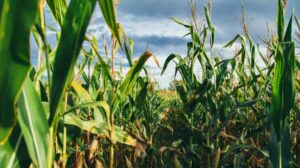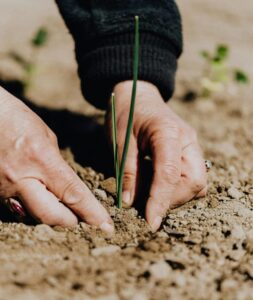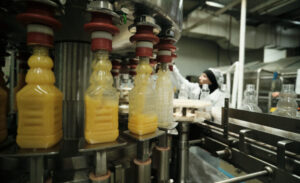Introduction
Biological control involves the use of a pest’s own natural enemies (parasites, predators and pathogens) – whether introduced or otherwise manipulated – to suppress the pest populations to an acceptable level. The word “pest” is used here in a broad sense, which includes diseases, insects, mites, nematodes and weeds and/or invasive alien plants.
While in principle there is little difference between the biological control of diseases, insect pests and weeds, it is usually accepted that a far higher degree of host-specificity is required for a weed-biocontrol agent than for a pest-biocontrol agent. Most pest-biocontrol agents kill their host directly, while suppression of weeds could take place by killing or weakening the weed, by reducing its reproductive capacity, or by creating an avenue for infection by pathogens.
Different techniques can be used in biological control:
- The technique most often used for the control of insect pests and weeds is referred to as classical biological control. It involves the introduction of natural enemies from the native range of the pest or weed from its country of origin, after which the natural enemies become established in the new country, build up their numbers and remain present in the new environment.
- Inundative biological control involves the repeated introduction and release of large numbers of natural enemies.
- Augmentative biological control describes actions that increase the populations of natural enemies.
- Conservation biological control refers to environmental modification to protect and enhance natural enemies.
Biological control cannot be expected to solve all pest or weed problems in a particular situation, but should nevertheless be the core around which pest or weed management systems are built. Biological control is often only possible within the framework of an integrated pest management (IPM) system.
Why the need for an alternative?
Pesticides have revolutionised agriculture, increasing yield and improving harvest quality, but their leftover stockpiles can contaminate the environment and endanger human health. If a pesticide has the potential to kill, then it also carries a risk to the environment. Some pesticides are harmful to people and the environment because they remain in the soil, air and water for a long time, are easily dispersed by water and air, and concentrate in the high-altitude, low-temperature regions.
Irresponsible use of non-selective pesticides eliminates not only the target pest but also many beneficial organisms that play an important role in garden, crop or natural ecosystems. Some of the answers to our pest problems may be right under our noses, such as the tiniest microbe in the soil, a fungus, bacterium, virus or nematode or one of the many parasitic or predatory insects, reptiles, birds and mammals in our environment. Organisms that we might consider “pests” have a place in the scheme of things. Without them there would be none of the wonderful birds, spiders and reptiles on our farms.
Programmes which promote the responsible use and disposal of agricultural chemicals are run by CropLife SA and CropLife International (see the “Chemicals in agriculture” page).
Biological control of agricultural pests using predators and parasites (including IPM)
Biological control of agricultural pests usually forms part of an integrated pest management (IPM) programme. IPM refers to the ‘integration of two or more control strategies’ for suppression of the pest below a given threshold level. Many purely chemical strategies are also aimed at reducing pest populations below a threshold level and not at eliminating entire populations of the pest. IPM is based on the assumption that it is not necessary or cost effective to try to eliminate an entire population of pests.
Instead, threshold levels are established to determine when control is necessary to bring pest population levels down. When the number of pests reaches a threshold level, a pesticide may be used to prevent excessive crop damage or loss greater than the cost of preventing the damage. IPM programmes require a thorough understanding of various techniques such as biological, cultural, mechanical and chemical control methods. Some actions needed in support of integrated pest management include correct pest identification, pest monitoring, and determination of economic injury levels.
This refers to environmental modification or other actions that are taken to preserve, protect and enhance natural enemies.
Spiders naturally suppress pest populations and are self-renewable, minimising costs to farmers. As you use fewer chemicals you may increase the effectiveness of spiders against pests. The benefit may be much more than just saving the cost of the chemical and application.
However, if you do use pesticides, minimise the effect on predators by avoiding synthetic pyrethroids, which are among the most toxic to beneficial predators. Insect growth regulators are among the least toxic to spiders. Systemic insecticides, which require the consumption of plant material for exposure to toxicity, affect natural enemies less. Softer pesticides allow the natural conservation of predators. Denser populations of spiders slow the rate of pest recovery so that fewer applications of pesticide are required in a season. Ten times more ground-dwelling dwarf and other spiders live in organic fields and fields sprayed with soft pesticides than in fields sprayed with broad-spectrum pesticides.
Once spiders are established in the environment, they are a self-renewable resource.
Even on a conventional farm, which uses chemical pesticides, predators kill most pests most of the time and when pesticides devastate natural enemies of potential pests, insects that were of little economic importance can become damaging pests. When a non-toxic control method is used, spiders reduce the numbers of and damage caused by potential pest species.
Inundative biological control and biopesticides
This technique is used for natural enemies that do not become permanently established in the new environment, and therefore large numbers have to be reared somewhere else and released periodically where they are required. There are some 30 commercially available species of predators and parasitoids, such as spiders, mites, beetles and parasitic wasps, which seek out and kill insect pests. They are mass-reared and sold by companies called ‘insectaries’.
The use of biopesticides is a special type of inundative biological control. The technology is such that we can “formulate” living organisms such as fungi, bacteria and viruses just as we would formulate chemical pesticides. These live “active ingredients” can be applied to crops with similar application methods to traditional pesticides. The actual period that these organisms remain active determines the frequency of application, as is the case with the active ingredient of traditional pesticides. Microbial control agents or pathogens such as fungi are available for the control of weeds, insect pests and diseases of crops.
Role players
View the Premium Listings below (scroll down or click on “Premium Listings” on the Table of Contents to the right).
Further reference:
Companies
- Find the list of SABO members at https://sabo.org.za.
Training and research
- Included in the South African Qualifications Authority (SAQA)-accredited qualifications is “Apply effective and responsible integrated pest, disease and weed control”. Find the Qualifications and Learning Material option at www.agriseta.co.za.
- Other ARC campuses in the Horticulture business division do research on the biological control of pests in certain crop situations. Consult www.arc.agric.za.
Information Core for Southern African Migrant Pests (ICOSAMP) is a regional co-operative initiative between officers working on migrant pests in different SADC counties. Find information on www.arc.agric.za.
Websites and publications
Visit the websites listed earlier on this page.
- The excellent Maize Information Guide (MIG) includes notes on beneficial insect species. Find the publication at www.arc.agric.za. Another useful publication is Revised Common Weeds in Southern Africa / Algemene Onkruide in Suidelike Afrika, also by ARC-Grain Crops. Visit the website or call 018 299 6199.
- Scholtz C., Scholtz J. & de Klerk H. 2021. Pollinators, Predators & Parasites – The Ecological Roles of Insects in Southern Africa. Cape Town: Struik Nature.
- CD Roms from the ARC-Plant Health and Protection include: (i) Crop Pests, vol. 1: Deciduous Fruit, Grapes and Berries (ii) Crop Pests, vol. 2: Citrus and Other Subtropicals (iii) Crop Pests, Vol. 3: Potatoes and Other Vegetables (also available as a book) (iv) Crop Pests, Vol. 4: Field Crops and Pastures (v) Crop Pests, vol. 5: Flowers and Other Vegetables (also available as a book) (vi) Medically Important Spiders and Scorpions of Southern Africa. Also available are several posters including: Herbicides and weeds: how to prevent or delay resistance/Onkruiddoders en onkruide: hoe om weerstand te vermy of te vertraag as well as several books and posters on spiders and scorpions. Write to booksales [at] arc.agric.za.
- Also available from ARC-Plant Health and Protection are The Kleynhans Manual. Collecting and Preserving Nematodes. PPR Handbook No. 16 and Plant Nematodes in South Africa.
- Read the Food and Agriculture Organization of the UN web pages on Integrated Pest Management.
- Find the “Agriculture inputs control” at www.nda.gov.za. Lists of registered insecticides, bio-insecticides, fungicides and bio-fungicides, application forms, contacts at the Department of Agriculture etc are available.
- Visit www.kejafa.com for the publication Weeds, Control without Poison by Charles Walters.
- Gurr G.M., Wratten S.D. & Snyder W.E. (Eds.). 2012. Biodiversity and Insect Pests: Key Issues for Sustainable Management. Hoboken, U.S.A.: Wiley-Blackwell.
- Find the “Integrated Pest Management” and other interesting options at www.toxipedia.org.
- Biocontrol Science and Technology presents original research and reviews in the fields of biological pest, disease and weed control. For more details on this journal, visit www.tandf.co.uk/journals/authors/cbstauth.asp
- Pesticides Health Risks for South African Emerging Farmers, compiled by Hanna-Andrea Rother and Ricado Jacobs, is available from the Surplus People Project. It champions Integrated Pest Management (IPM) and agro ecology. Call 021 448 5605.
- Find the presentation “Registration of Biological Remedies vs. Bio-Fertilizers in South Africa 15 November 2017 CSIR CONFERENCE CENTRE” by Thilivhali Nepfumbada (DALRRD) under “Events” at www.fertasa.co.za. Biological control agents are included in what is examined.
- The Pesticides Action Network (PAN) is a network “in over 90 countries working to replace the use of hazardous pesticides with ecologically sound and socially just alternatives”. Visit www.pan-international.org.
- Find the notes on pest management at https://attra.ncat.org/pest.html, the National Sustainable Agriculture Project (USA).
- Visit www.wepma.org, website of World Environmental Pest Managers Association.
- Read about bats at www.batcon.org, website of Bat Conservation International.
Find the ARC-Plant Health and Protection (ARC-PHP) on www.arc.agric.za. Posters, CD-roms, publications and other materials are available. Write to infoppri [at] arc.agric.za.
Relevant publications:
- PPRI Leaflet Series: Weeds Biocontrol – contact Hildegard Klein, tel: 012 356 9841; e-mail kleinh [at] arc.agric.za
- Dossiers on Biological Control Agents available to aid Alien Plant Control– contact Hildegard Klein, tel: 012 356 9841; e-mail kleinh [at] arc.agric.za
Some articles
- Sinkins E. 2024, December 20. “Getting rid of pests the natural way”. The Witness. Available at https://witness.co.za/news/kzn/2024/12/20/getting-rid-of-pests-the-natural-way/
- Arnoldi M. 2024, November 19. “ARC to release invasive-plant controlling beetles in Umkhomazi”. Engineering News. Available at www.engineeringnews.co.za/article/arc-to-release-invasive-plant-controlling-beetles-in-umkhomazi-2024-11-19
- Reporter. 2024, November 12. “SA fruit industry launches pest monitoring centre to fight invasive threats”. Fresh Plaza. Available at www.freshplaza.com/africa/article/9677411/sa-fruit-industry-launches-pest-monitoring-centre-to-fight-invasive-threats/
- Staff Reporter. 2024, November 10. “Study of fruit flies could save South Africa’s fruit industry millions”. IOL. Available at www.iol.co.za/weekend-argus/news/study-of-fruit-flies-could-save-south-africas-fruit-industry-millions-8822c330-745d-4938-b71d-2c27ef23fea4
- Van Eeden Z. 2024, November 5. “Optimising stone fruit production with biological control”. Farmer’s Weekly. Available at www.farmersweekly.co.za/crops/fruit-and-nuts/optimising-stone-fruit-production-with-biological-control/
- Reporter. 2024, May 24. “R2 million to help agricultural sector suppress pest affecting export crops”. SA News. Available at www.sanews.gov.za/south-africa/r2-million-help-agricultural-sector-suppress-pest-affecting-export-crops
- Van Eeden Z. 2024, January 22. “A more holistic way of farming”. Farmer’s Weekly. Available at www.farmersweekly.co.za/farming-basics/how-to-crop/a-more-holistic-way-of-farming
- Du Toit M. 2022, August 3. “The pros of integrated pest management”. Farmer’s Weekly. Available at www.farmersweekly.co.za/crops/field-crops/the-pros-of-integrated-pest-management/
- Coleman A. 2021, November 24. “Integrated pest management: Taking care of crop protectors”. Farmer’s Weekly. Available at www.farmersweekly.co.za/crops/field-crops/integrated-pest-management-taking-care-of-crop-protectors/
- Byrne M. & Tocco C. 2021, September 6. “Dung beetle experiment suggests carbon dioxide is bad for insects too”. The Conversation. Available at https://theconversation.com/dung-beetle-experiment-suggests-carbon-dioxide-is-bad-for-insects-too-166836
- Sumner S. 2021, February 17. “Why I Matter”. New Internationalist. Available at https://newint.org/features/2020/12/07/wasp-biodiversity-why-i-matter
- Calatayud P. & Subramanian S. 2020, April 29. “New bugs, found in Kenya, can help to control major maize pests”. The Conversation. Available at https://theconversation.com/new-bugs-found-in-kenya-can-help-to-control-major-maize-pests-134906
- Coleman A. 2019, September 23. “‘Agriculture must stop chemical warfare against insects’”. Farmer’s Weekly. Available at www.farmersweekly.co.za/agri-news/south-africa/agriculture-must-stop-chemical-warfare-against-insects/
- Return to Now. 2018, June 6. “Mushroom-Based Pesticide Could Make Chemical Pesticides Obsolete”. Available at https://returntonow.net/2018/06/04/mushroom-based-pesticide-could-make-chemical-pesticides-obsolete/
- Ngumbi, E. 2018, March 21. “Why African farmers should balance pesticides with other control methods”. The Conversation. Available at https://theconversation.com/why-african-farmers-should-balance-pesticides-with-other-control-methods-93289
- Coleman, A. 2018, February 23. “Insects: the answer to sustainable agriculture”. Farmer’s Weekly, pp 44-46.
- Carrington, D. 2018, January 31. “Stripes of wildflowers across farm fields could cut pesticide spraying”. The Guardian. Available at www.theguardian.com/environment/2018/jan/31/stripes-of-wildflowers-across-farm-fields-could-cut-pesticide-spraying
- Phillips L. 2017, January 28. “Beneficial insects can help farmers control pests”. Farmer’s Weekly. Available at www.farmersweekly.co.za/agri-technology/farming-for-tomorrow/beneficial-insects-can-help-farmers-control-pests/
- The article “Agrichemicals and ever more intensive farming will not feed the world” looks at how crop protection companies are increasingly incorporating biocontrol into their arsenals. Another relevant one is “UN experts denounce ‘myth’ pesticides are necessary to feed the world”. The latter deals with the Report of the Special Rapporteur on the right to food. Find these articles on www.theguardian.com.
- Our appreciation to Hildegard Klein at the ARC-PPR for the notes she made available to the project, and to Michelle Paterson for feedback on the draft chapter.






